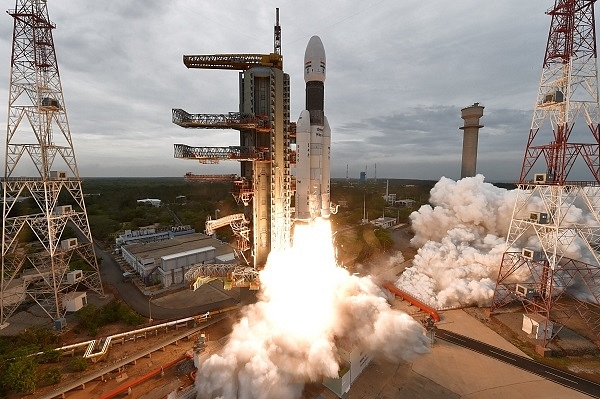Insta
India's Chandrayaan-2 Completes One Year In Lunar Orbit, All Scientific Instruments Performing Well: ISRO

The Chandrayaan 2 was launched successfully from ISRO’s Sriharikota base on 22 July 2019 (image via @ISRO/Facebook)
It is one year since India's second moon spacecraft Chandrayaan-2 was inserted into the lunar orbit, the Indian Space Research Organisation (ISRO) said on Thursday (20 August).
The Indian space agency said Chandrayaan-2 spacecraft/orbiter was launched on 22 July 2019 and inserted into lunar orbit on 20 August 2019.
Though the soft-landing attempt of the lander Vikram was not successful, the orbiter, which was equipped with eight scientific instruments, was successfully placed in lunar orbit.
The scientific payloads onboard the orbiter include Terrain Mapping Camera, Orbiter High Resolution Camera, Chandrayaan-2 Large Area Soft X-ray Spectrometer, Solar X-ray Monitor, Imaging Infra-Red Spectrometer, Dual frequency Synthetic Aperture Radar, Chandra’s Atmospheric Composition Explorer and Dual Frequency Radio Science Experiment.
The orbiter completed more than 4,400 orbits around the moon and all the instruments are currently performing well, the ISRO said.
The spacecraft is healthy and performance of subsystems are normal. The orbiter is being maintained in 100 +/- 25 km polar orbit with periodic orbit maintenance (OM) manoeuvres.
So far, 17 OMs have been carried out since achieving 100 km lunar orbit on 24 September 2019.
There is adequate onboard fuel to remain operational for about seven years, ISRO said.
ISRO said that the first-year observations from Chandrayaan-2 demonstrate the in-orbit performance of payloads, strongly indicating its ability to contribute significantly to lunar science.
"The anticipated long life of this orbiter can contribute much to the current resurgence of interest among the global scientific community for a sustained presence on the Moon," it said.
ISRO said that public data release is planned by end of this year, after validation by a formal peer review.
The Indian space agency said the first moon mission Chandrayaan-1 established the extensive presence of surface water and the indication for subsurface polar water-ice deposits, arguing for more focused studies on the extent of water on the surface, below the surface and in the tenuous lunar exosphere, to address the true origin and availability of water on moon.
(With inputs from IANS)
Introducing ElectionsHQ + 50 Ground Reports Project
The 2024 elections might seem easy to guess, but there are some important questions that shouldn't be missed.
Do freebies still sway voters? Do people prioritise infrastructure when voting? How will Punjab vote?
The answers to these questions provide great insights into where we, as a country, are headed in the years to come.
Swarajya is starting a project with an aim to do 50 solid ground stories and a smart commentary service on WhatsApp, a one-of-a-kind. We'd love your support during this election season.
Click below to contribute.
Latest